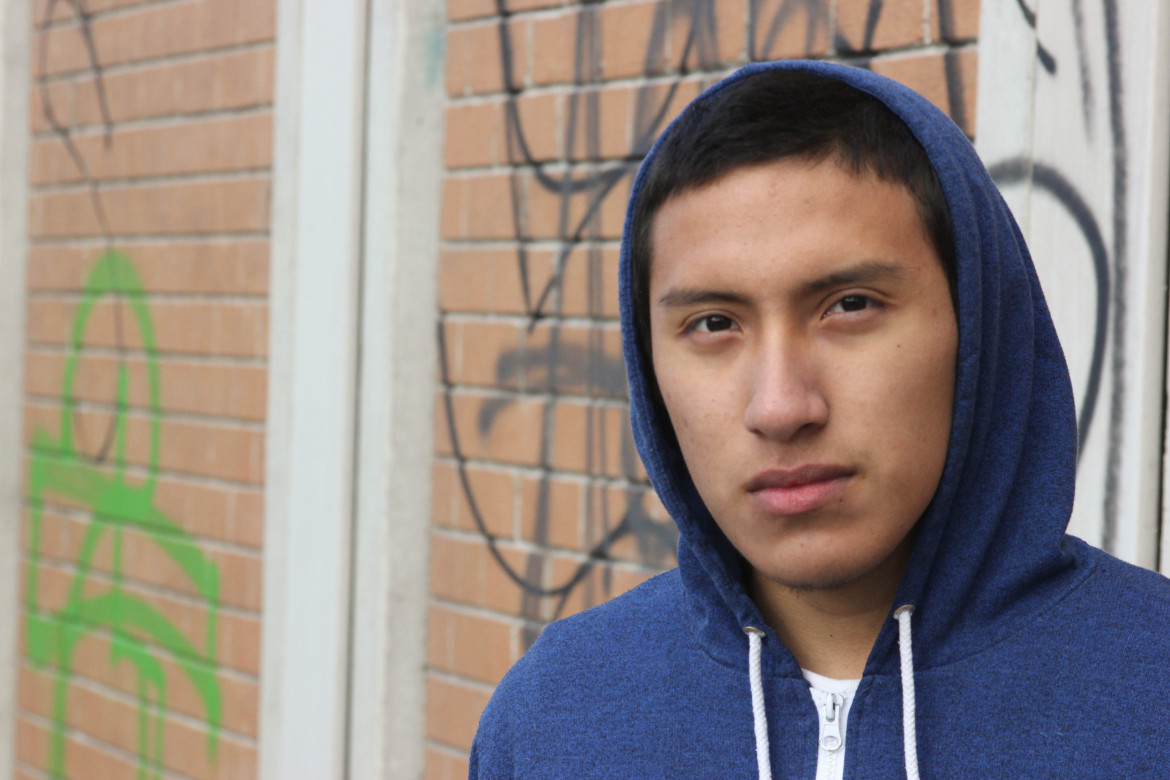
Bianca S. Flowers / JJIE
Flowers / JJIE
NEW YORK — The drawings that once were confined to his notebook were eventually found on light poles, sidewalk curbs and storefront gates along Roosevelt Avenue.
Alexis Serrano and his graffiti crew covered one of Queens most targeted commercial strips with their ominous sprayed-painted tags in June and July.
“We would go around 3 in the morning because not many people would be out,” he said. “We would go from the beginning of Roosevelt up to 82nd Street.”
 Most of the tags are gone now. Serrano can’t recall how many businesses and abandoned buildings they hit in those two months. But he says he will always remember standing before the judge in Queens Criminal Court awaiting his sentence. It was his third arrest for vandalism charges.
Most of the tags are gone now. Serrano can’t recall how many businesses and abandoned buildings they hit in those two months. But he says he will always remember standing before the judge in Queens Criminal Court awaiting his sentence. It was his third arrest for vandalism charges.
“The judge told me that I would be charged as an adult,” Serrano said.
But instead of time behind bars, Serrano, 17, was placed in a long-term alternative sentencing program often given to young offenders.
“I did not have any other choice,” Serrano said. “I had charges pending and my lawyer told me it was my only opportunity or I would go to Rikers.”
The Queens District Attorney started the Second Chance Program 25 years ago to give first-time, nonviolent offenders a chance to redeem themselves through community service. After finding teens desecrating a cemetery with graffiti, a group of reverends spearheaded the program.
Graffiti vandals have always been the most prevalent cases.

Bianca S. Flowers / JJIE
Flowers / JJIE
“We need more programs like these to keep kids out of the criminal justice system for minor offenses,” said Gail Giordano, the assistant district attorney. “Some have a hard time facing what they’ve done and if they can’t do that, chances are they’ll do it again.”
Giordano, who oversees the program, says most defendants with graffiti cases struggle with an addiction.
“It’s almost a scream for help,” she said.
Rick Stanton, a graffiti expert based in California, says tagging accounts for 70 to 95 percent of graffiti vandalism in the U.S.
“The competition is to get your tagging crew’s markers up as many times as possible,” Stanton said. “They want recognition and their primary motivation is for their work to be seen.”
Serrano spent the remainder of his summer cleaning up graffiti with the Woodside Neighborhood Association, a local organization in Queens.
Serrano has tagged what he said were mostly factories, mailboxes and other “easy targets” since the 6th grade.
“Tagging homes is more disrespectful. I like to put emotions, it could be struggle or whatever I’m feeling,” Serrano said. “I try to create a scene and hope someone can understand it.”
Despite growing up in a two-parent household, Serrano said, only one has been present for most of his childhood.
“I've mostly had a feminine influence. My relationship with my dad hasn’t changed since I started the program,” Serrano said. “When I'm in the house, he's not here. I haven't gotten the father side so that's why I'm always mad.”
Nicholai Khan, a graffiti vandal turned notable artist in Bayside Queens, completed Second Chance 13 years ago, but has never left. Now, Khan, 33, teaches art to defendants in the program. He said youth often use graffiti as a tool of rebellion rather than expression.
“They leave their mark in a world that feels hopeless to them,” Khan said. “It is a statement of angst in society and they feel like outcasts, especially in their families.”
Serrano’s case was dismissed in November. Because of his progress, he finished only 70 of his 120 assigned community service hours.
“I’m glad they caught me when they did because I would have ended up doing worse,” Serrano said. “Not a lot of people get their record clean and this program gave me that opportunity.”
